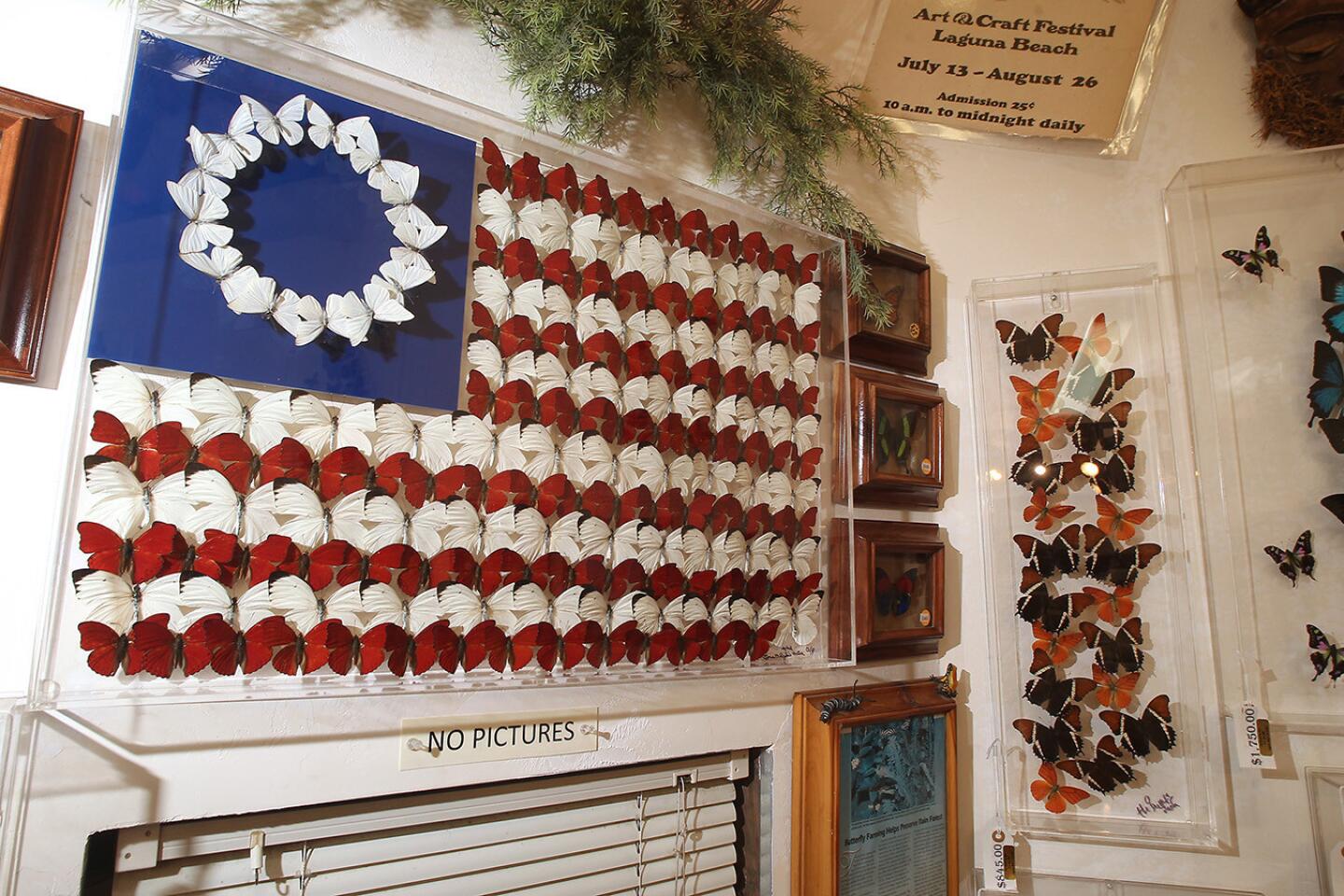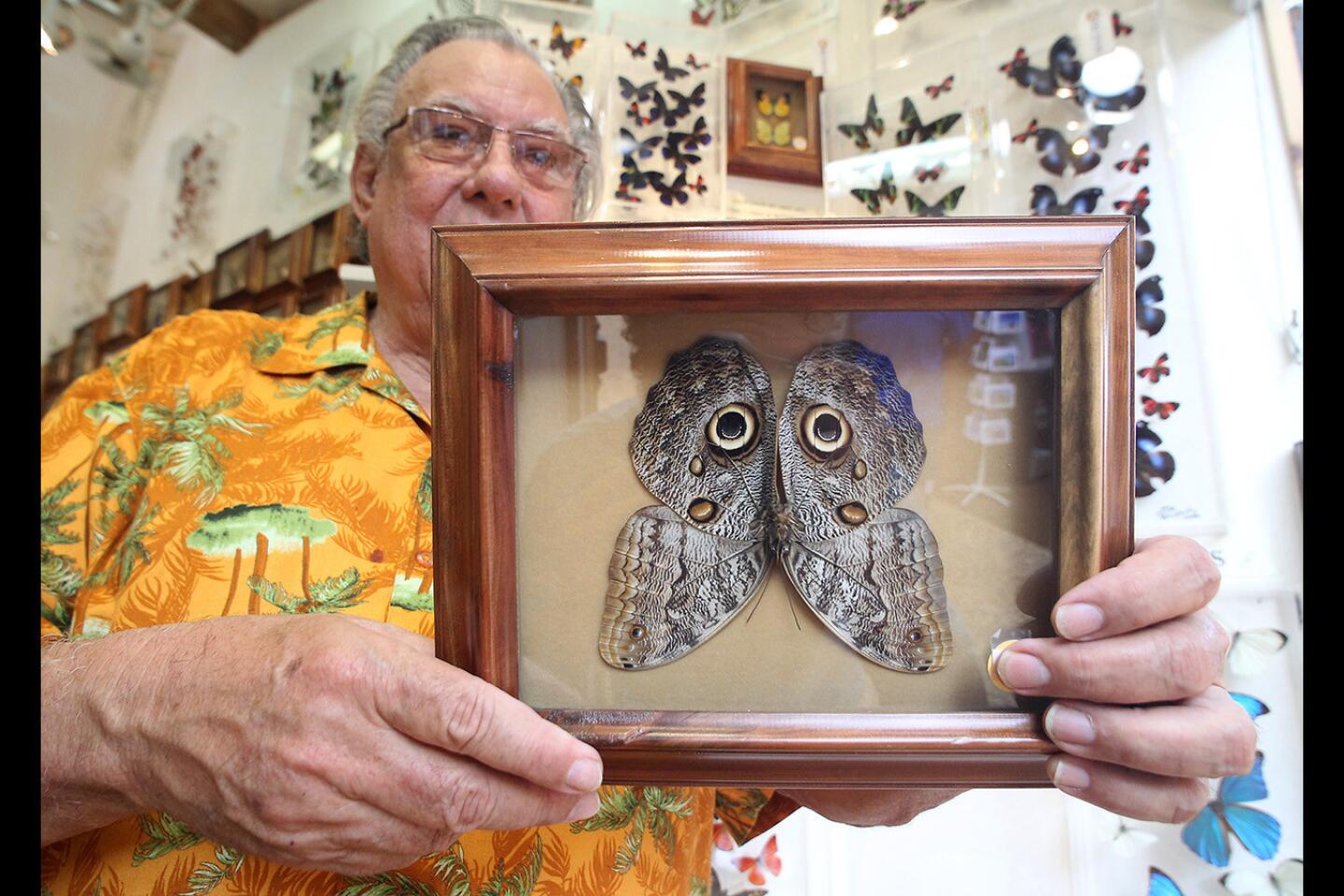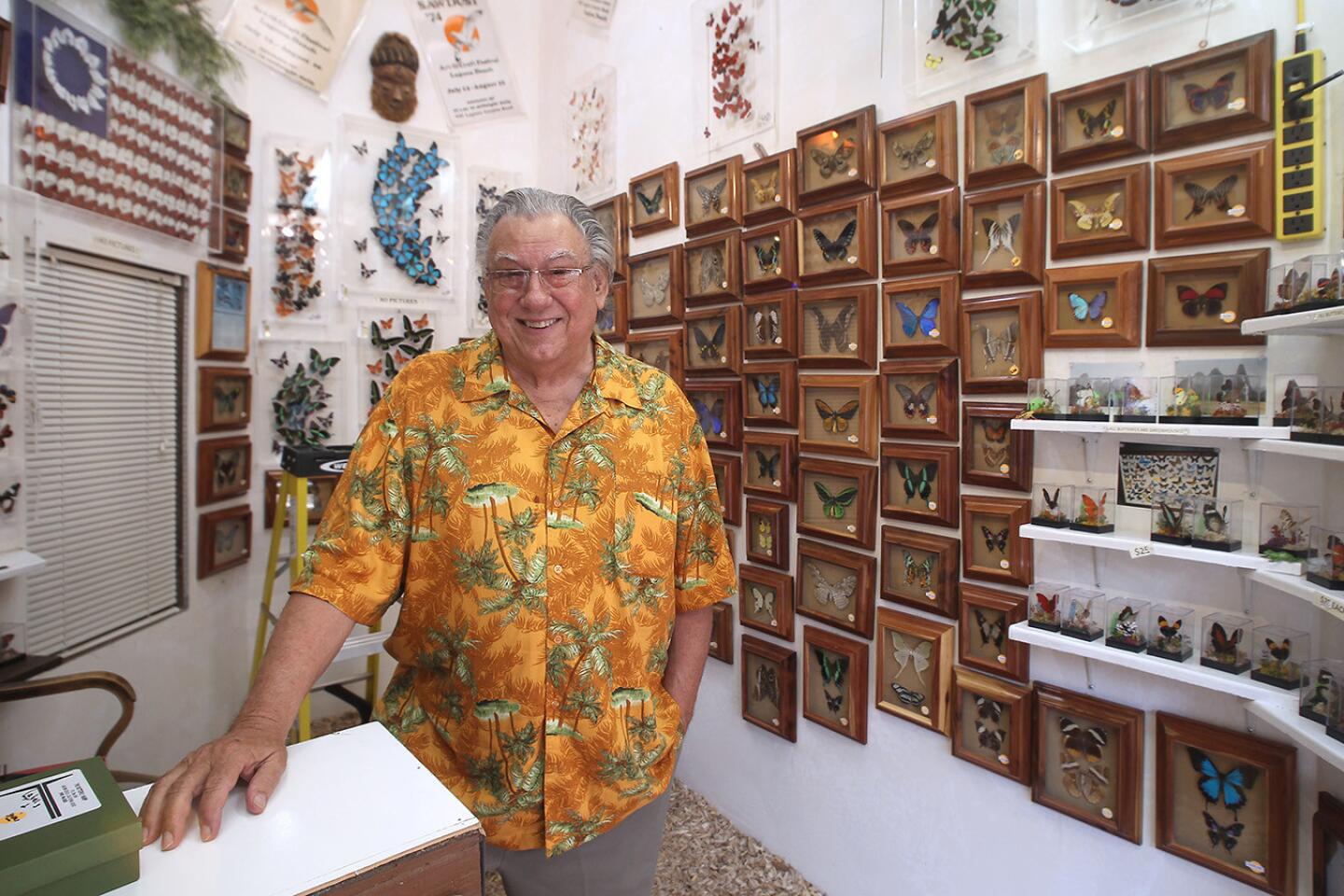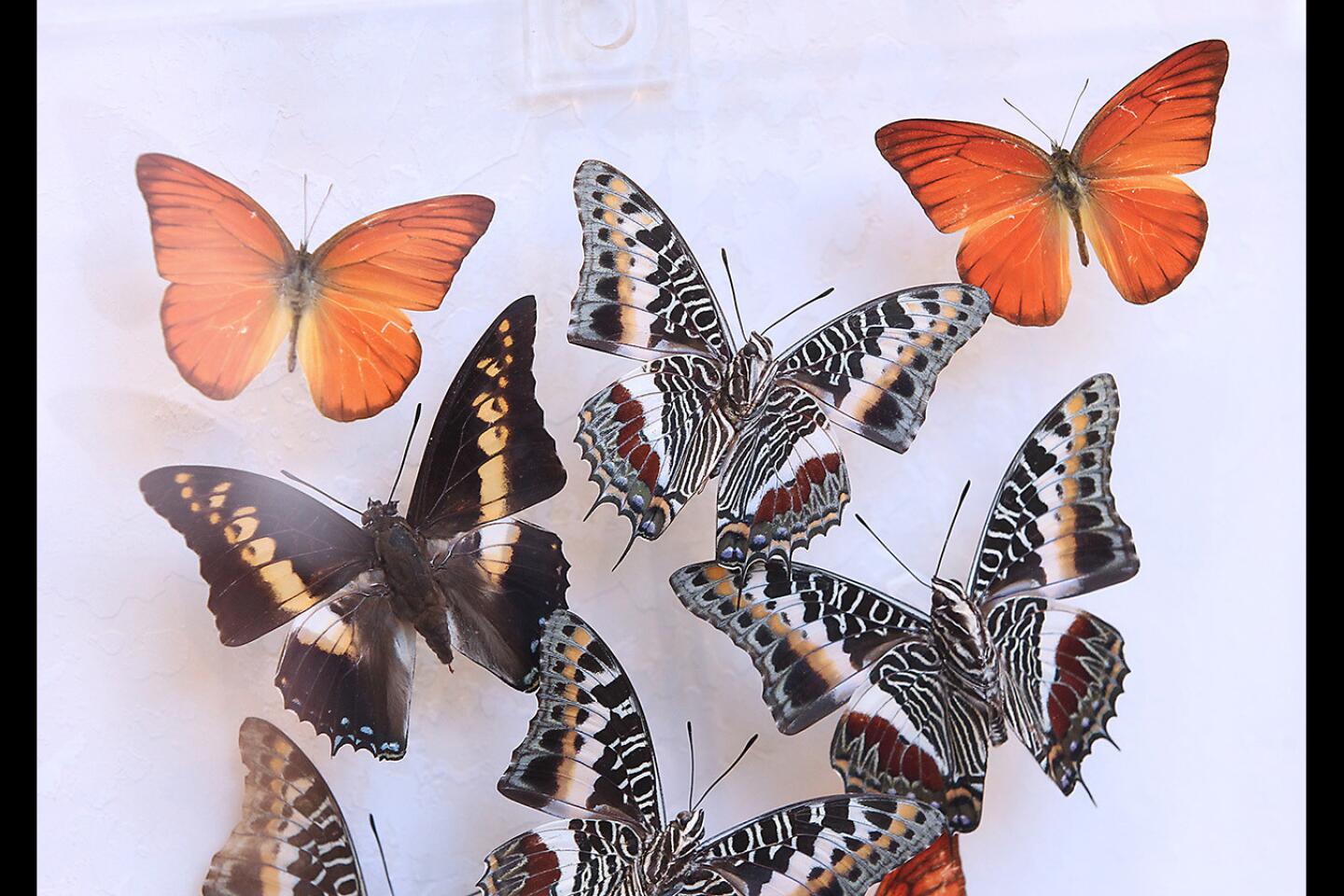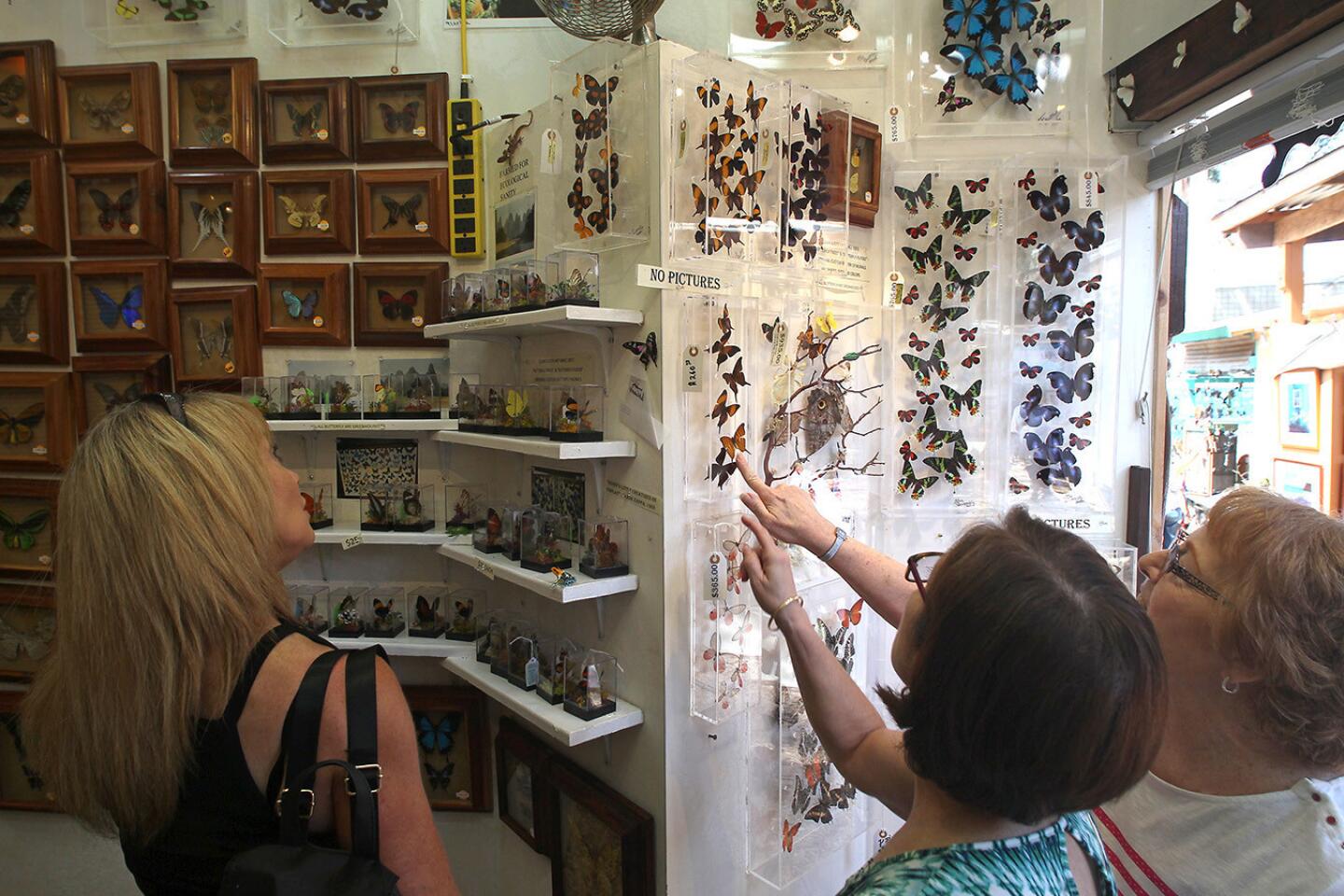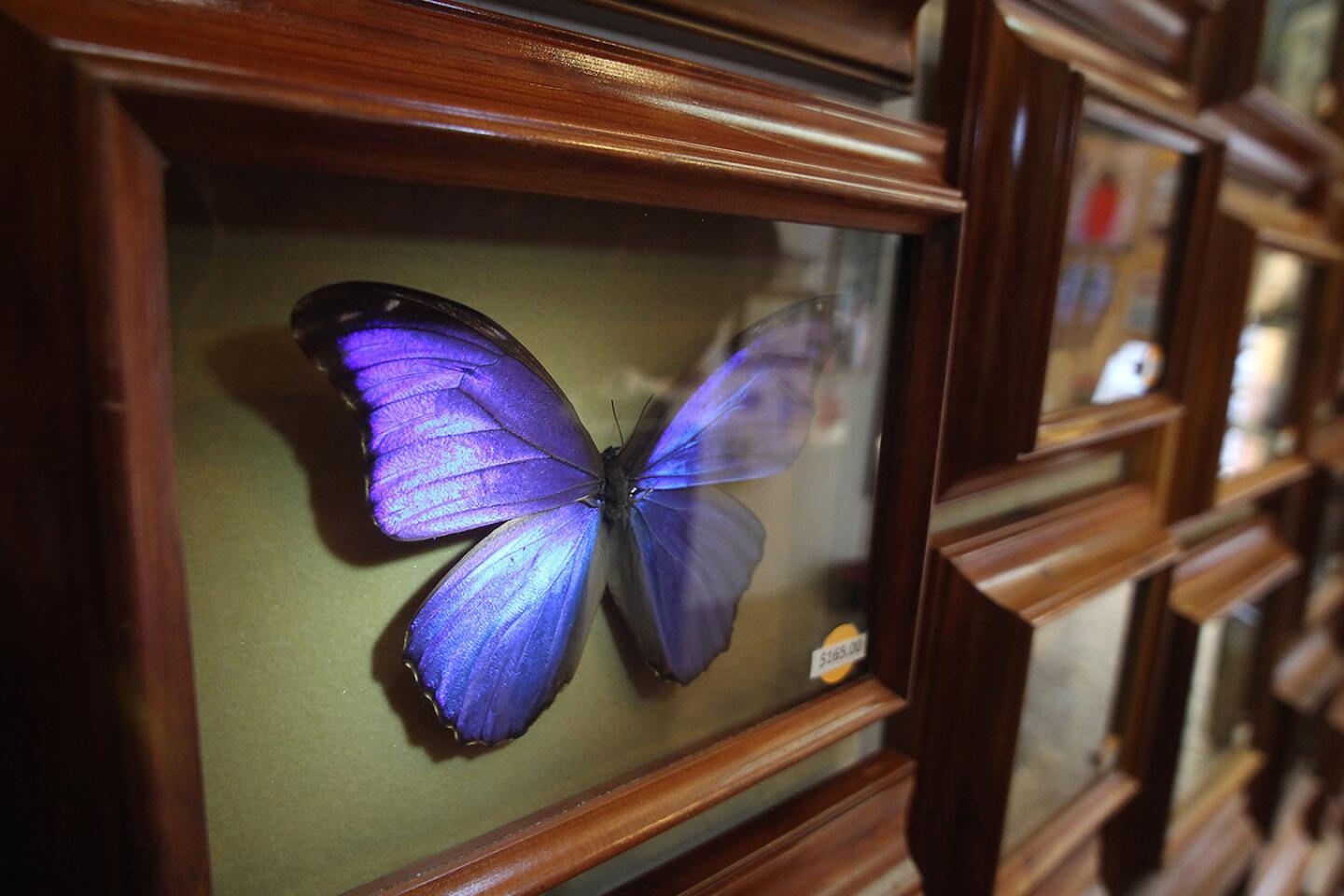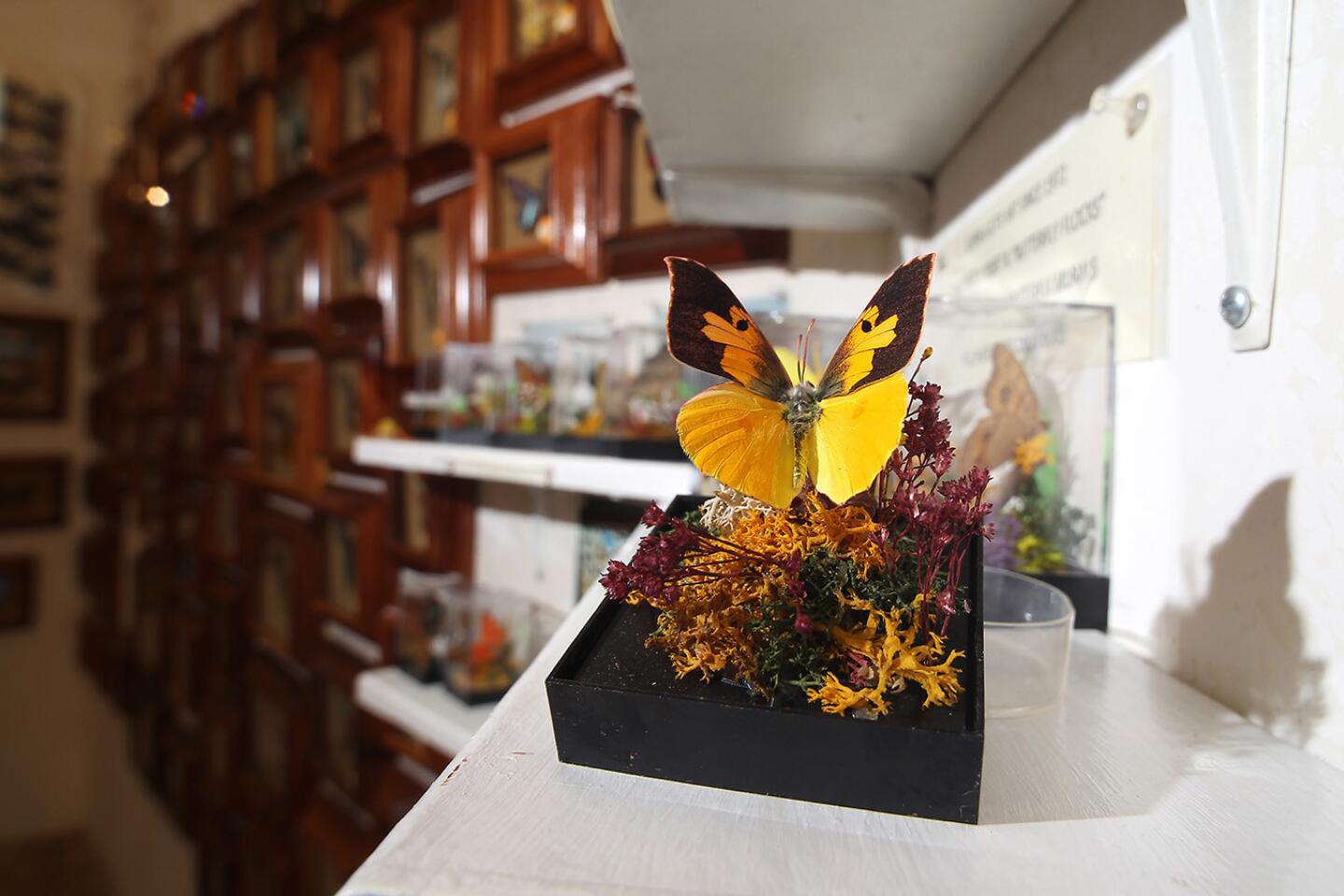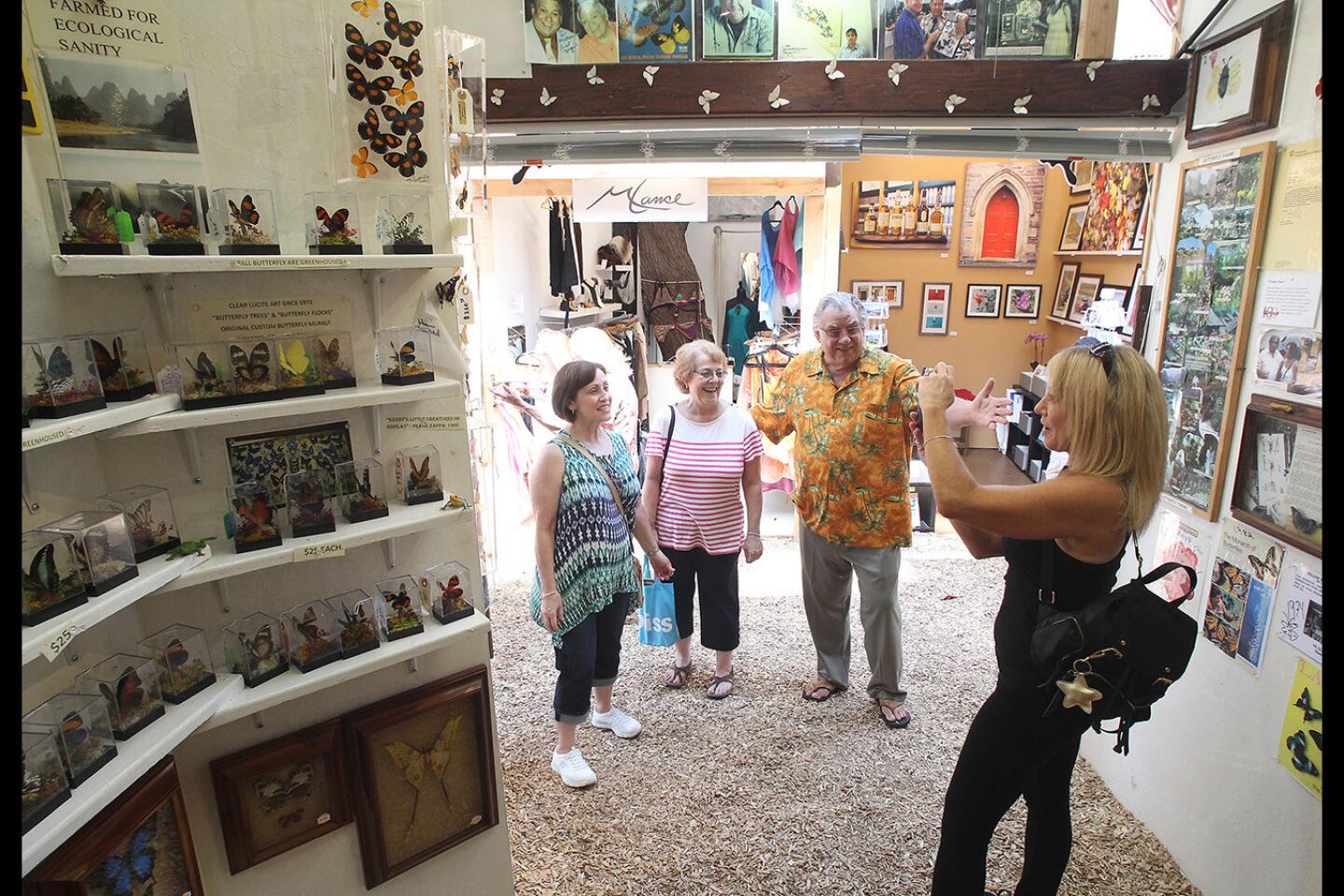‘Butterfly Man’ goes patriotic with a U.S. flag design at the Sawdust Festival
- Share via
Ken Denton has displayed butterflies for more than 40 years, and recently spread his artistic wings by arranging butterflies in the shape and colors of the American flag.
“I’ve wanted to do [the flag] for a couple of years,” Denton said earlier this week while standing in his booth at the Sawdust Art & Craft Festival at 935 Laguna Canyon Road.
The Laguna Beach resident, who calls himself “The Butterfly Man,” said the issue was how to get 50 white butterflies to represent the 50 states.
Denton looked online and saw a flag from the days of the original 13 colonies that would render the project more manageable.
Denton ordered red butterflies, cymothoe sangaris from Africa, and two species of white butterflies for the stripes and stars, Appias nero celestina from Indonesia and Nepheronia from Peru.
Denton, 70, has visited about two dozen countries in sourcing the most exotic, colorful butterflies — all of them raised in greenhouses.
“They lived a noble life as a farmed [insect] a lot longer than they ever would in the wild,” Denton said.
For a couple of months Denton went back and forth with suppliers to get the right butterflies for the flag, which does not have an official name.
He could not find navy blue butterflies to comprise a portion of the flag, so Denton made do with a piece of plastic for the blue backdrop.
Once Denton created a mock-up and had all his butterflies, it was time to assemble the flag on the dining room table.
He attached the butterflies to the lucite case with a silicon caulking solution. Denton said it took him about one day to arrange the butterflies in their color-coded places.
Nature’s allure
Denton’s fascination with nature and wildlife began in his teen years after his family moved from Hollywood to Corona del Mar. Denton hiked the hills of Orange County and collected beetles, wasps and lizards.
“I found things I never saw before,” Denton said. “I became an amateur naturalist.”
John Johnson, who taught science at both Corona del Mar and Newport Harbor high schools, helped fuel Denton’s passion when he asked Denton to bring him a wasp that eats tarantulas, known as a tarantula hawk. Denton said Johnson showed him how to preserve insects.
Denton earned a bachelor’s degree in sociology and a teaching credential in social sciences and natural history and conservation from Cal State Fullerton.
After college Denton was managing a Laguna Beach gas station when a girlfriend suggested he sell the framed butterflies at a craft show.
Denton followed the suggestion and customers bought his work.
“I made more money there in one day than I made in a week at the gas station,” Denton said.
At another event, a buyer from the now-defunct Broadway department store gave Denton his business card and asked if they could meet to discuss a potential order. The executive placed the order, which Denton said kept his butterfly business running for one year.
Denton displayed his work at various state fairs and while fun, the travel could be grueling. He became interested in matters involving business contracts.
He enrolled and graduated from Western State University College of Law, now Western State College of Law. Denton passed the bar and now practices civil law.
He said collecting butterflies provides hands-on experience he craves, while his work as a lawyer offers intellectual stimulation.
From the humidifier to the frame
Butterflies arrive dried in paper envelopes. Denton places them in a humidifier to moisten them so they are easier to handle. Smaller butterflies may take a few hours while larger ones could take days.
After time in the humidifier, Denton shapes the butterflies on boards made of balsa wood and blots them to dry.
Once dry, he transfers the butterflies to airtight drawers to cure in a fumigant, which sterilizes the insect of any fungus, mold or pests.
Finally, Denton transfers the butterflies to airtight cedar frames or clear lucite display cases.
The walls of Denton’s booth are adorned with myriad butterfly and moth displays, including the death’s-head moth, which readers may recognize from the film “Silence of the Lambs,” the owl butterfly and the snake’s-head moth.
The snake’s-head moth folds its wings a certain way so that an area near the moth’s wing tips resembles a snake’s head, meant to dissuade predators.
Moths and butterflies are both classified in the lepidoptera order, but have different characteristics, said Denton, who has exhibited at the Sawdust since 1974.
Moths primarily fly at night whereas butterflies fly during the day. Moths have different antenna structures and body types, Denton added.
Denton said it’s not difficult to preserve and display butterflies, it just takes practice and patience.
His butterfly collections have been archived at the Natural History Museum of Los Angeles County, while Denton’s personal collection of California butterflies is on display at the Santa Barbara Museum of Natural History.
“I did it as a hobby first,” he said. “If you do anything, do it as a hobby first because you are not going to cut corners.”
Visitors to Denton’s Sawdust booth have taken notice of the flag.
“I wanted to do something artsy to show the Sawdust people I can do something more than put butterflies in a frame,” Denton said.
“I think it’s a great piece and I really enjoy his work,” Sawdust board member Michael Thorstensen wrote in an email. “Ken has a great following of Sawdust patrons.”
Twitter: @AldertonBryce
All the latest on Orange County from Orange County.
Get our free TimesOC newsletter.
You may occasionally receive promotional content from the Daily Pilot.
